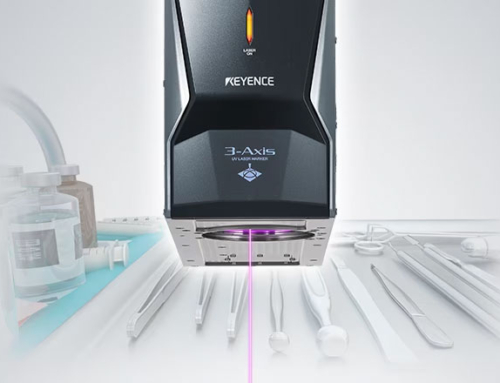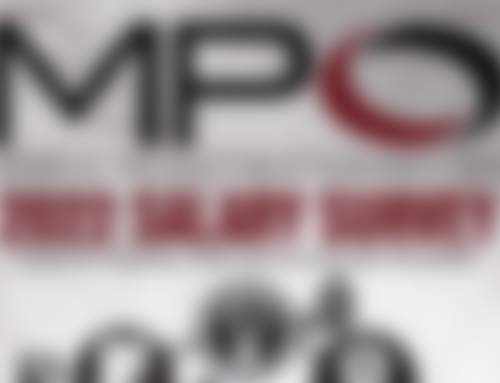Why Pad Printing Is the Ideal Solution for Medical Devices
When designing a complex medical device, there are many factors to consider. Beyond system functionality, industrial design, and human factors, OEMs need to consider product instructions, company branding, and even warning labels.
Because medical device design can often come with complex geometries and challenging surfaces that require a textured or gloss finish, printing intricate multi-colored logos, system instructions, or location guides can create many challenges. That is why Forum Plastics has made significant investments in state-of-the-art pad printing technology.
What is pad printing?
Pad printing is used in a wide variety of industries and applications ranging from medical devices, appliances, transportation, and consumer electronics. Pad printing offers unique advantages, especially if the molded component has complex geometry, an uneven surface, curves, or if the molded part has texture or recessed areas. This type of printing is often used to print on three-dimensional surfaces, if the images are very fine, or if resolution is a critical factor. For example, this can include barcodes, labels, and intricate company logos.
Pad printing is recognized for its versatility, reliability and durability. One way that an injection molding partner can provide high-quality pad printing is through automation. Forum Plastics recently enhanced our processes through automation. We also have extensive experience working with strategic partners to address common problems and challenges associated with pad printing, including:
- Ink and pad selection suitable to the material
- Pre-treatment of the surface to ensure proper ink adhesion
- Process controls monitoring proper image clarity
- Automation to control proper ink viscosity, print quality and printing speed
When selecting an injection molding partner that offers pad printing, there are some key considerations. To gain an understanding of how the injection molder handles part preparation for pad printing, ask the following questions:
1. Does the injection molder use release agents?
Forum does not use release agents in molding on any of our products. Therefore, we do not have to pre-clean parts to remove any films or contamination.
2. How does the injection molder address surface prep for adhesion?
Because of Forum’s comprehensive processes, this is considered in the development stage. For some plastics, Forum conducts an alcohol wipe of the surface prior to printing. However, this is rare occurrence.
3. Does the injection molder have a pretreatment protocol?
Forum uses a corona flame pre-treatment for several parts. This process lowers the dyne level (surface tension) of the part. This process is done a maximum of 24-hours before the parts are to be printed.
4. Does the supplier address ionization?
With Forum’s higher volume printing systems, we utilize an ionization unit to reduce or eliminate static charge on the parts prior to printing.
Geometry and Ink Considerations
Other part design issues that should be considered relate to part geometry. An injection molder can print on many surface geometries, but the maximum graphic wrap on a curved surface is roughly 120°. Anything past this would require the part to be rotated and an additional “hit” of ink would need to be applied to continue the graphic. Fixture design plays a critical role in all pad printing, especially when lining up the part from one hit to the next. The part must be held firmly to ensure that it will not move, deflect, or rotate during the printing process. Additionally, parts do need to be free of flash/burrs/loose particles in the printing area.
Textured parts can be printed with success depending on how rough the surface is. Typically, the rougher the surface, the less full or clean the print will be. Pad selection, including size, material, and durometer, are very important when printing. Different plastic materials and surface finishes require different pads.
Another critical issue includes ink selection, starting with the substrate or plastic that is being printed on. There are several types of inks used for various plastics (TPR, TPU, TPL, etc.). Forum primarily uses Marabu inks as these inks provide the best adhesion and color saturation. Forum also utilizes ink thinners and static eliminators as needed to ensure print quality and consistency.
A Leading Partner in Pad Printing
The advantage of pad printing is that it can be used on difficult surfaces that don’t lend themselves to other marking technologies. The ability to pad print on irregular shapes and surfaces, quickly print on challenging substrate materials, and provide high-print quality of finely-detailed logos, images, or instruction graphics makes it the ideal solution for production decoration.
Forum has made significant investments in pad printing and automation to ensure that this critical secondary operation is performed with quality and longevity in mind. Forum Plastics works closely with leading medical device manufacturers, research and design departments, and design engineers to develop pad printing processes to meet specific needs.
Learn more about Forum’s pad printing capabilities, or download the Pad Printing Capabilities overview to learn more about our services.
Services Overview: Pad Printing Capabilities
Pad printing on difficult and irregular surfaces is one of Forum Plastics’ specialties. With over 25 years of molding experience, Forum can precisely print your artwork on nearly any surface.
Download the pad printing capabilities overview to learn more about our services.
Stay Connected
Sign up to get updates from Forum




